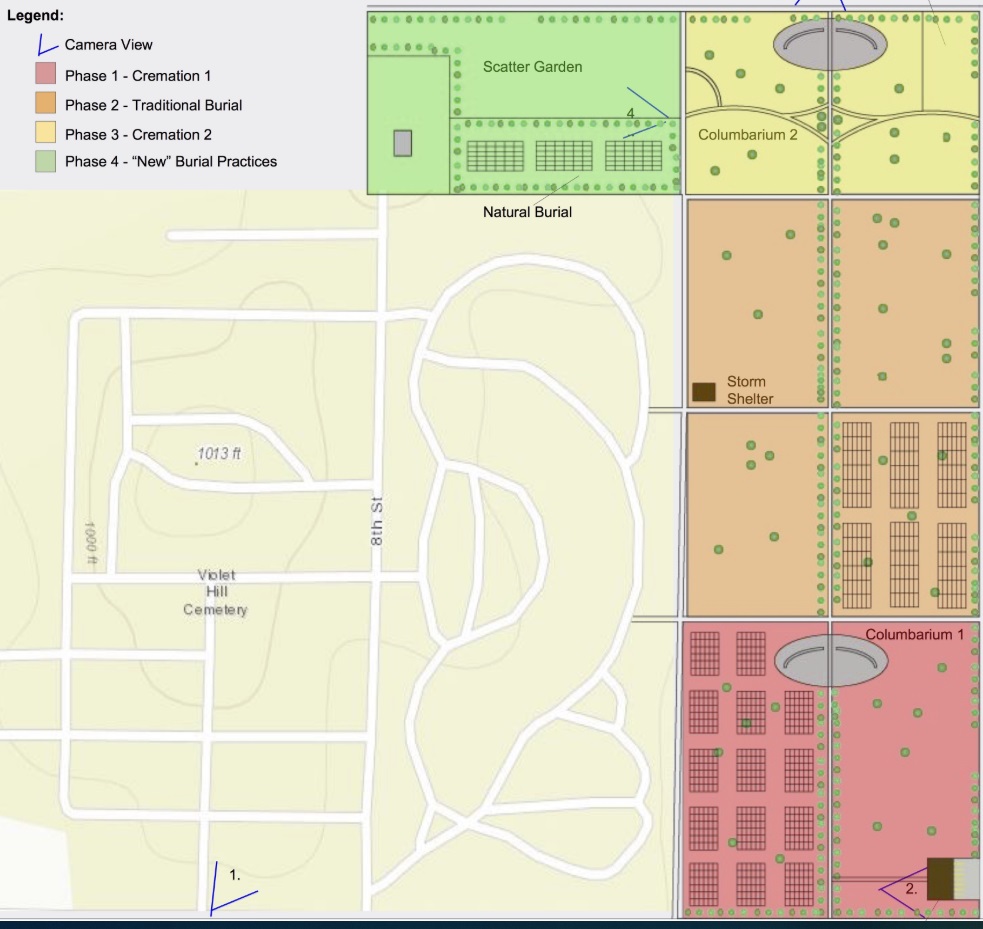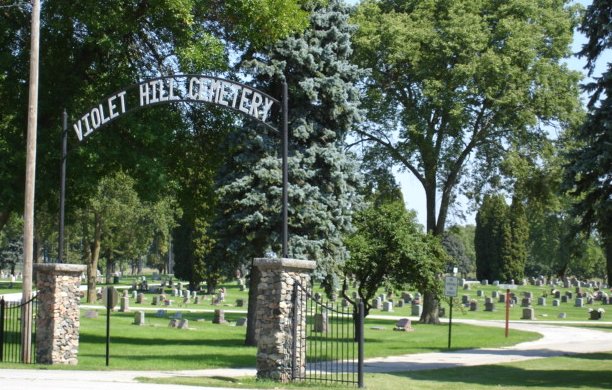
graduate from Council Bluffs. Image courtesy Carlton Basmajian
AMES, Iowa – The city of Perry is facing a problem that most communities will confront in the coming years, if they’re not already: The cemetery is running out of room.
Over the past several years, only two U.S. researchers have been studying and publishing work on the land-use implications of cemeteries and burial: Carlton Basmajian, an associate professor of community and regional planning at Iowa State University, and Christopher Coutts, an associate professor of urban and regional planning at Florida State University.
Last year Perry City Administrator Manager Sven Peterson, an ISU graduate in community and regional planning, approached Basmajian with a predicament. Peterson asked for input as the city starts drafting a master plan for land recently purchased adjacent to Violet Hill Cemetery. This will be the cemetery’s third expansion due to growing space needs.
Basmajian’s 11 students took on Peterson’s question in a spring semester class called, “City of the Dead.” They learned about the history of cemeteries and burial practices in the U.S. as well as land-use regulations in Iowa, planning practices and the religious and cultural factors that complicate the issue.
The students came up with five options Basmajian says could springboard into solutions for communities across America grappling with cemetery space constraints.
“Lots of cities don’t have plans,” Basmajian said. “Most communities haven’t built a cemetery since the 1950s, so there’s been more than half a century of no expansion and no planning. Now, with the bubble of baby boomers growing older, this is going to be a major issue in the next 30 years.”
Most of the 76 million baby boomers in the U.S. will die between 2024 and 2042. If all of them were buried traditionally, it would require an area of 130 square miles — a space about the size of Las Vegas.
Even if trends shift toward cremation or non-traditional burial methods, communities will still wrestle with space issues in their cemeteries, Basmajian said.
“But planners don’t usually talk about it,” he said, despite the growing problem in cemeteries of all sizes, from Violet Hill in Perry to those in large metropolitan areas, such as the historic Green-Wood Cemetery in New York City.
Basmajian’s students considered all options for Perry, including traditional burial, cremation, natural burial, columbaria (which hold urns), scattering gardens and more. Each team developed proposals for how the city could increase cemetery capacity for the next 30 to 50 years.
What they came up with was a mix of traditional and new burial practices along with an analysis of costs to families and suggestions for how planners might start the conversations within their community.
Kaylinn Taggart, a senior in community and regional planning and recent architecture graduate from Council Bluffs, and her team mate, community and regional planning graduate Kyle Ten Napel from Sergeant Bluff, came up with a phased plan that combines cremation, traditional burial, natural burial and a scattering garden — some of which Taggart recognized “would require policy changes” both in Perry and in Iowa.
Another team also designed a multi-use cemetery, considering columbaria, a scattering garden, public art and landscaping. Engagement with the public will be an important component, they said, particularly as some in Perry’s growing immigrant population may have different burial customs.
“This class opened my eyes to what will end up happening in the next 30 to 40 years,” said Michael Pillman, a recent graduate in community and regional planning and urban design from South Lebanon, Ohio. “It’s something cities should really start planning for. Hopefully, this work can start a cultural change where people will start talking about cemeteries and land-use planning.”
Chelsea Davis is a communications specialist at the Iowa State University News Service.


















